Defining silent cinema
1. In common usage, the period in which cinema first appeared and developed, from the mid 1890s through to the introduction of synchronized sound in the late 1920s; films produced during this time did not have a soundtrack, though, in fact, they were rarely shown in silence.
2. In film studies, silent cinema (films made from around 1904 until the late 1920s) is usually considered as a period of film history that follows early cinema (films made from the mid 1890s until around 1904).
In practice, the silent era is not fully distinct from the early cinema period, with a transitional cinema shaping film production between 1908 and 1917. It is in this period that a number of key changes shift the cinema of attractions towards a feature film-driven standard. Above all, World War I had a damaging effect on the film industries of France, Italy, and Denmark; this, combined with the rise of a vertically integrated studio system in the US, shifted the balance of power in the world’s film industries, with filmmaking conventions associated with the emergence of classical Hollywood cinema becoming increasingly prominent worldwide from 1916. In this period, the multi-reel feature film, increasingly screened in dedicated cinema spaces, or picture palaces, became dominant (see exhibition). The career of D.W. Griffith is indicative: Griffith’s early films, including The Lonedale Operator (1911), make increasingly sophisticated use of editing, narrative/narration, and continuity techniques; and in 1915, The Birth of a Nation brought together intertitles (see subtitle), an original orchestral score, location shooting, elaborate costuming, iris effects (see mask), unusual and innovative camera placements and angles, extensive use of colour tinting, dollying and panning camera shots, closeups to reveal intimate expressions, dissolves to blend images or switch from one image to another, high-angle shots, panoramic long shots (see shot size), and extensive parallel editing. Griffith also cultivated a naturalistic acting style, in contrast to the histrionic acting associated with early cinema. Griffith’s work functioned as a showcase for the filmmaking techniques associated with a truly ‘international style’ emerging in the major film-producing nations, as, for example, in the work of Abel Gance (Napoleon (France, 1927)), Alexsandr Dovzhenko (Zvenigora, (USSR, 1928)), Carl Theodor Dreyer (La Passion de Jeanne d’Arc/The Passion of Joan of Arc (France, 1928)), and Fritz Lang (Metropolis (Germany, 1927)) (see France, film in; Germany, film in; USSR, film in). This period of filmmaking is widely celebrated as an influential era of great artistic flourishing (see canon). ...
Kuhn, A., & Westwell, G. (2020). Silent cinema. In A Dictionary of Film Studies. Oxford University Press. Retrieved 2 Jun. 2023
Finding library resources for silent films
The Jones Media Center has a collection of silent films for viewing. To find them, you can do a subject search for "silent films." The first heading with over 180 entries contains most of the titles in the collection. Other subject headings are listed below.
If you want to find silent films from other countries, scroll down the list to see silent films followed by a country name. The entries under those headings are films produced in that country. However, don't overlook the list under the first heading. That list also contains foreign produced silent films.
To find books about silent films, look at the subject headings that contain "history and criticism." These books will discuss silent films in general or those produced in different countries.
-
silent filmsCall number range PN 1993 through PN 1998 on Baker Level 4.
-
silent films [ insert name of country ]This subject heading will find resources for a specific country. Just insert the name of the country after "silent films."
Introductory reading(s)
-
American silent horror, science fiction and fantasy feature films, 1913-1929 by
Call Number: Baker-Berry PN 1995.9 .H6 S6195 2012 v. 1-2ISBN: 9780786435814During the Silent Era, when most films dealt with dramatic or comedic takes on the boy meets girl, boy loses girl theme, other motion pictures dared to tackle such topics as rejuvenation, revivication, mesmerism, the supernatural and the grotesque. ... -
Encyclopedia of early cinema by
Call Number: Baker-Berry PN 1993.45 .E53 2010ISBN: 9780415778565The Encyclopedia of Early Cinema is a unique one-volume reference work which explores the first 25 years of cinema's development, from the early 1890s to the mid-1910s. These early years of the history of cinema have lately been the subject of resurgent interest and a growing body of scholarship, and have come to be recognized as an extraordinarily diverse period, when moving pictures were quite unlike the kind of cinema that later emerged as the dominant norm. This encyclopedia covers all aspects of scholarship on early cinema, both traditional and revisionist. It contains articles on the technological and industrial developments, the techniques of film production, the actors and filmmakers of the time, and on the changing modes of representation and narration, as well as the social and cultural contexts within which early films circulated, including topics such as distribution, exhibition and audience. ... -
 The Oxford handbook of silent cinema
by
Call Number: eBookISBN: 9780190496692With thirty-four original chapters from three dozen top scholars, The Oxford Handbook of Silent Cinema provides a thoughtful and provocative re-examination of a medium that would become the dominant form of mass entertainment by the second decade of the twentieth century. The volume is arranged around a series of broad topics: the "invention" of cinema as both technology and medium; the intermedial development of film aesthetics and genres; nontheatrical and non-commercial uses of cinema; the political economy of Hollywood mass culture; film and global modernities; and silent cinema's publics and counter-publics. The historiographical essays in this collection engage with the question of how we might rethink silent film history, especially in the context of the developed media ecosystem that defined the early 1900s. ...
The Oxford handbook of silent cinema
by
Call Number: eBookISBN: 9780190496692With thirty-four original chapters from three dozen top scholars, The Oxford Handbook of Silent Cinema provides a thoughtful and provocative re-examination of a medium that would become the dominant form of mass entertainment by the second decade of the twentieth century. The volume is arranged around a series of broad topics: the "invention" of cinema as both technology and medium; the intermedial development of film aesthetics and genres; nontheatrical and non-commercial uses of cinema; the political economy of Hollywood mass culture; film and global modernities; and silent cinema's publics and counter-publics. The historiographical essays in this collection engage with the question of how we might rethink silent film history, especially in the context of the developed media ecosystem that defined the early 1900s. ... -
Silent cinema: a guide to study, research and curatorship by
Call Number: Baker-Berry PN 1995.75 .C4613 2019ISBN: 9781844575282Publication Date: 3rd ed.Paolo Cherchi Usai provides a comprehensive introduction to the study, research and preservation of silent cinema from its heyday in the early 20th century to its present day flourishing. He traces the history of the moving image in its formative years, from Edison's and Lumière's first experiments to the dawn of 'talkies'; provides a clear guide to the basics of silent film technology; introduces the technical and creative roles involved in its production, and presents silent cinema as a performance event, rather than a passive viewing experience. ... -
Silent cinema: an introduction by
Call Number: Baker-Berry PN 1995.75 .C4613 2000ISBN: 9780851707464Publication Date: Rev. and expanded ed.This revised guide to silent film studies contains two new chapters that present an analysis of color technology and aesthetics. They look at how silent films are saved, restored and made accessible via archives. -
Silent film: a very short introduction by
Call Number: eBookISBN: 9780190852528Encompassing the thirty-five year span between the initial development of film technology in the mid-1890s and the adoption of synchronized sound in the late 1920s, the cinema's silent era is both one of the most important epochs of film history and one of the most misunderstood within the popular imagination. In this brief and readable account, these formative decades come vividly to life. ... -
Silent film sound by
Call Number: Baker-Berry PN 1995.75 .A46 2004ISBN: 9780231116626Because silent cinema is widely perceived as having been exactly that-silent-no one has fully examined how souns was used to accompany the films of this era. Silent Film Sound reconsiders all aspects of sound practices during the entire silent film period. Based on extensive original research and accompanied by gorgeous illustrations, the book challenges the assumptions of earlier histories of this period in film and reveals the complexity and swiftly changing nature of American silent cinema. ...
Selected book title(s)
-
Black and white bioscope: making movies in Africa, 1899 to 1925 by
Call Number: Baker-Berry PN 1995.75 .P37 2018ISBN: 9781783209439Black and White Bioscope recovers a neglected chapter in the histories of world cinema and Africa. It tells the story of movie production in Africa that long predated francophone African films and Nollywood that are the focus of most histories of this industry. At the same time as Hollywood was starting, a film industry in Southern Africa was surging ahead in integrating production, distribution, and exhibition. African Film Productions Limited made silent movies using technical and acting talent from Britain, the United States, and Australia, as well as from Africa. ... -
The cine goes to town: French cinema, 1896-1914 by
Call Number: eBookISBN: 9780520912915Publication Date: Updated and expanded ed.Richard Abel's magisterial book radically rewrites the history of French cinema between 1896 and 1914, particularly during the years when Pathé-Frères, the first major corporation in the new industry, led the world in film production and distribution. Based on extensive investigation of rare archival films and documents, and drawing on recent social and cultural histories of turn-of-the-century France and the United States, his book provides new insights into the earliest history of the cinema. Abel tells how early French film entertainment changed from a cinema of attractions to the narrative format that Hollywood would so successfully exploit. ... -
Fifty great American silent films, 1912-1920 byCall Number: Baker-Berry PN 1993.5 .U6 S553ISBN: 9780486239859A pictorial survey that gives stories, stars, and background data. Also use: Fifty Classic British Films: 1932 to 1982 (1981).
-
Filmografía del cine mudo mexicano byCall Number: Baker-Berry PN 1995.75 .R49 1986 v. 1, 3
-
High-class moving pictures: Lyman H. Howe and the forgotten era of traveling exhibition, 1880-1920 by
Call Number: Baker-Berry PN 1998.3 .H69 M87 1991ISBN: 9780691047812The entrepreneur of phonograph concerts and motion-picture programs Lyman H. Howe was the leading traveling exhibitor of his time and the exemplar of an important but until now little examined aspect of American popular culture. This work, with its numerous and lively illustrations, uses his career to explore the world of itinerant showmen, who exhibited all motion pictures seen outside large cities during the 1890s and early 1900s. They frequently built cultural alliances with genteel city dwellers or conservative churchgoers and in later years favored "high-class" topics appealing to audiences uncomfortable with the plebeian nickelodeons. ... -
In the kingdom of shadows: a companion to the early cinema byCall Number: Baker-Berry PN 1993.5 .G7 I5 1996ISBN: 9781900541053In the Kingdom of Shadows puts flesh on the bare bones of the film industry as it developed in Britain between 1895 and 1915. The authors have selected texts and illustrations to evoke the period. Adopting a thematic rather than chronological approach, chapters look at specific aspects of the reception, exhibition, and numerous applications of film. Introductory essays for each chapter serve to place a selection of contemporary extracts and illustrations in context.
-
Kino and the woman question: feminism and Soviet silent film byCall Number: Baker-Berry PN 1993.5 .R9 M37 1989Kino and the Woman Question is a study of Soviet silent films in terms of their complex and often contradictory explorations of woman's position within socialist culture and narrative. Judith Mayne argues that representations of women shaped, subverted, or otherwise complicated the cinematic and ideological goals of Soviet film in the 1920s.
-
Passions and deceptions: the early films of Ernst Lubitsch by
Call Number: Baker-Berry PN 1998.3 .L83 H35 1992ISBN: 9780691008783A collaborator with Warner Brothers and Paramount in the early days of sound film, the German film director Ernst Lubitsch (1892-1947) is famous for his sense of ironic detachment and for the eroticism he infused into such comedies as So This Is Paris and Trouble in Paradise. In a general introduction to his silent and early sound films (1914-1932) and in close readings of his comedies, Sabine Hake focuses on the visual strategies Lubitsch used to convey irony and analyzes his contribution to the rise of classical narrative cinema. ... -
Radicalism in American silent films, 1909-1929: a filmography and history by
Call Number: Baker-Berry PN 1995.75 .S54 2000ISBN: 9780786406920There were 435 American silent motion pictures released between 1909 and 1929 (both shorts and four-reel or longer features from 1909 to 1917) that engaged the issues of militant labour and revolutionary radicalism. The first part of this study contains an introduction and three chapters that examine how the American motion picture industry portrayed labour radicals, capitalists and Bolsheviks during this 20-year period. ... -
The silent cinema in song, 1896-1929: an illustrated history and catalog of songs inspired by the movies and stars, with a list of recordings by
Call Number: ML 128 .M7 W58 2009ISBN: 9780786438044Musical accompaniment was an important feature of the early moviegoing experience. The quality of a musical score could easily make or break silent films, and the songs sometimes became more popular than the films. At the same time, interestingly, the silent cinema became itself a major subject in popular music, inspiring a flood of songs about the films, the stars and the experience of going to the movies. Today, few of these songs are remembered. This study begins the documentation of the lost history of songs of the silent cinema. ... -
Silent movies: the birth of film and the triumph of movie culture by
Call Number: Baker-Berry PN 1995.75 .K63 2007ISBN: 9780316117913Drawing on the extraordinary collection of The Library of Congress, one of the greatest repositories for silent film and memorabilia, Peter Kobel has created the definitive visual history of silent film. From its birth in the 1890s, with the earliest narrative shorts, through the brilliant full-length features of the 1920s, Silent Movies captures the greatest directors and actors and their immortal films. Silent Movies also looks at the technology of early film, the use of color photography, and the restoration work being spearheaded by some of Hollywood's most important directors, such as Martin Scorsese and Francis Ford Coppola. ...
A selected list of silent films
Find more silent films in the library's collections.
-
Avant garde: experimental cinema of the 1920s and '30sCall Number: Jones Media DVD #2709Twenty-four short films selected from the avant garde movement of the 1920's and 1930's, originally produced as individual silent motion pictures in France, the Netherlands, Germany, and the United States between 1921 and 1939.
-
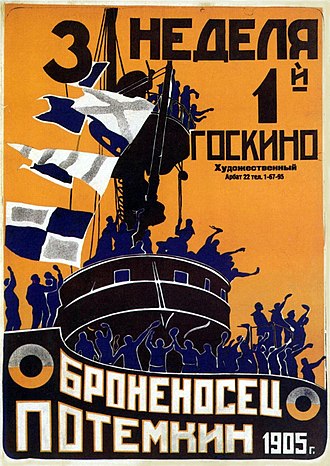 The Battleship Potemkin = Bronenosets Potemkin
by
Call Number: Streaming videoPotemkin recreates the 1905 mutiny on the battleship "Prince Potemkin." It focuses on a mutiny by the battleship's crew and the subsequent massacre of civilians - that reflects the spirit of the times.
The Battleship Potemkin = Bronenosets Potemkin
by
Call Number: Streaming videoPotemkin recreates the 1905 mutiny on the battleship "Prince Potemkin." It focuses on a mutiny by the battleship's crew and the subsequent massacre of civilians - that reflects the spirit of the times. -
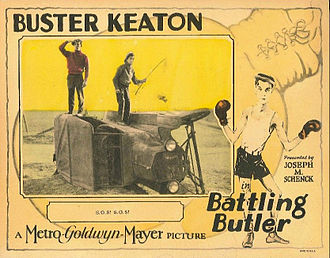 Battling Butler
by
Call Number: Jones Media DVD #2432Alfred Butler, a fragile young man whose father sends him into the country where he hopes masculinity will blossom, is mistaken for "Battling" Butler, a renowned prizefighter. Alfred carries on the ruse to impress a young lady, but his charade is soon complicated by the arrival of a true contender.
Battling Butler
by
Call Number: Jones Media DVD #2432Alfred Butler, a fragile young man whose father sends him into the country where he hopes masculinity will blossom, is mistaken for "Battling" Butler, a renowned prizefighter. Alfred carries on the ruse to impress a young lady, but his charade is soon complicated by the arrival of a true contender. -
Die Abenteuer des Prinzen Achmed: ein Silhouetten Film = The adventures of Prince Achmed: a silhouette film by
Call Number: Jones Media DVD #12645ISBN: 9783898487504An African sorcerer conjures up a flying horse, which he shows to the Caliph. When the sorcerer refuses to sell it for any amount of gold, the Caliph offers any treasure he has. The sorcerer chooses Dinarsade, the Caliph's daughter, to her great distress. Prince Achmed, Dinarsade's brother, objects, but the sorcerer persuades him to try out the horse. It carries the prince away, higher and higher into the sky, as he does not know how to control it. The Caliph has the sorcerer imprisoned. ...
Neither the original negatives nor a full version of the original film survives. This version was restored from an all-but-complete nitrate positive preserved in the BFI's National Film and Television Archive, with German-language intertitles copied from Dulac's original designs, by the Deutsches Filmmuseum, Frankfurt am Main. -
 Dr. Mabuse, der Spieler = Dr. Mabuse, the gambler
by
Call Number: Jones Media DVD #5043Sinister Dr. Mabuse maintains his wealth through counterfeiting, manipulating the stock exchange and bending weaker minds to his will. In part 1, Mabuse builds his empire and casually ruins Count Told while entrancing the thrill-seeking Countess. In part 2, Mabuse turns from criminal to villain, murdering the Count and kidnapping the Countess.
Dr. Mabuse, der Spieler = Dr. Mabuse, the gambler
by
Call Number: Jones Media DVD #5043Sinister Dr. Mabuse maintains his wealth through counterfeiting, manipulating the stock exchange and bending weaker minds to his will. In part 1, Mabuse builds his empire and casually ruins Count Told while entrancing the thrill-seeking Countess. In part 2, Mabuse turns from criminal to villain, murdering the Count and kidnapping the Countess. -
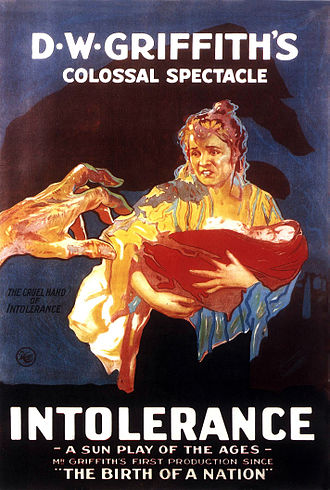 Intolerance: love's struggle throughout the ages
by
Call Number: Streaming videoSwitches back and forth between four separate stories from Babylonian times to the twentieth century to show humanity's inhumanity and intolerance through the ages. The Babylonian story deals with the fall of Babylon in 538 B.C. The Judean story treats the life of Christ. The French story centers on the Massacre of St. Bartholomew's Day in 1572. The modern story is set in an American mill town and the slum area of an American city.
Intolerance: love's struggle throughout the ages
by
Call Number: Streaming videoSwitches back and forth between four separate stories from Babylonian times to the twentieth century to show humanity's inhumanity and intolerance through the ages. The Babylonian story deals with the fall of Babylon in 538 B.C. The Judean story treats the life of Christ. The French story centers on the Massacre of St. Bartholomew's Day in 1572. The modern story is set in an American mill town and the slum area of an American city. -
 Judex: a serial in twelve episodes
by
Call Number: Jones Media DVD #4629One of cinema's first 'superheroes,' the mysterious Judex is torn between an oath of justice against the wealthy banker Favraux, who had earlier wronged his family, and his secret love of Favraux's daughter, Jacqueline. This framework is the basis of a series of extraordinary and engaging incidents involving Judex's brother, the evil Diana Monti and her accomplices, the detective Cocatin, and the charming Licorice Kid.
Judex: a serial in twelve episodes
by
Call Number: Jones Media DVD #4629One of cinema's first 'superheroes,' the mysterious Judex is torn between an oath of justice against the wealthy banker Favraux, who had earlier wronged his family, and his secret love of Favraux's daughter, Jacqueline. This framework is the basis of a series of extraordinary and engaging incidents involving Judex's brother, the evil Diana Monti and her accomplices, the detective Cocatin, and the charming Licorice Kid. -
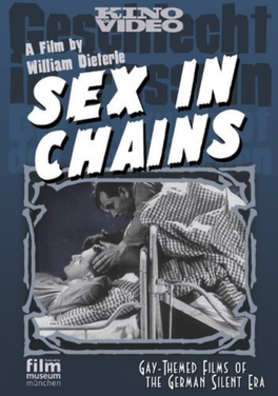 Sex in chains
by
Call Number: Jones Media DVD #3757When Sommer accidentally kills a nightclub patron harassing his wife Helene, he's sentenced to three years in prison. Denied the comforts promised in their marriage, the young newlyweds risk their future and find release where they can -- Sommer in the arms of a handsome fellow prisoner and Helene with the boss whose kindness becomes her only solace.
Sex in chains
by
Call Number: Jones Media DVD #3757When Sommer accidentally kills a nightclub patron harassing his wife Helene, he's sentenced to three years in prison. Denied the comforts promised in their marriage, the young newlyweds risk their future and find release where they can -- Sommer in the arms of a handsome fellow prisoner and Helene with the boss whose kindness becomes her only solace. -
 Slapstick encyclopedia
by
Call Number: Jones Media DVD #2642 discs 1-5A collection of originally silent films with new music soundtracks, English inter-titles and introductory essays. All were originally produced as separate silent motion pictures, 1909-1929.
Slapstick encyclopedia
by
Call Number: Jones Media DVD #2642 discs 1-5A collection of originally silent films with new music soundtracks, English inter-titles and introductory essays. All were originally produced as separate silent motion pictures, 1909-1929. -
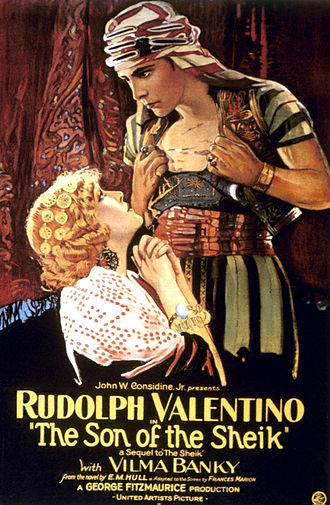 Son of the sheik
by
Call Number: Jones Media DVD #3748The son of a sheik is lured into a thieves' trap by a beautiful girl. When he escapes, he kidnaps the girl, they fall in love, and ride off into the sunset together.
Son of the sheik
by
Call Number: Jones Media DVD #3748The son of a sheik is lured into a thieves' trap by a beautiful girl. When he escapes, he kidnaps the girl, they fall in love, and ride off into the sunset together. -
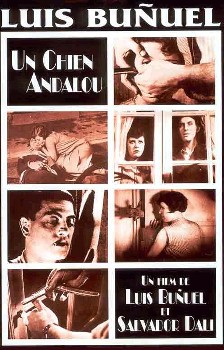 Un chien andalou
by
Call Number: Jones Media DVD #3768Filmed in the subjective language of the unconscious, this early avant-grade film appears as fresh today as when it first appeared.
Un chien andalou
by
Call Number: Jones Media DVD #3768Filmed in the subjective language of the unconscious, this early avant-grade film appears as fresh today as when it first appeared. -
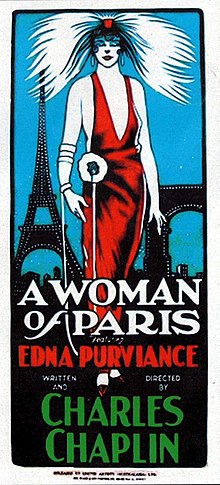 A woman of Paris
by
Call Number: Jones Media DVD #2684 disc 1-2A Woman of Paris: When her elopement to her beau fails, Marie winds up in Paris as a kept woman whose attempt at reconciliation with her true love only leads to more grief and, finally, tragedy.
A woman of Paris
by
Call Number: Jones Media DVD #2684 disc 1-2A Woman of Paris: When her elopement to her beau fails, Marie winds up in Paris as a kept woman whose attempt at reconciliation with her true love only leads to more grief and, finally, tragedy.
Finding scholarly articles & journal title(s)
Articles and other writings about movies can be found in many publications. Our collection has at least 2 journals which look at silent films. They are listed below. Other film journals within our collection will cover silent films. You can use Film & Television Literature Index to find relevant articles. Or use the search box at the top of the screen.
-
The silent pictureCall Number: Jones Media Micro film #3646R no.1-19 1968/69-1973
-
 Nineteenth century theatre and film
by
Call Number: Electronic journalThe journal welcomes discussion on any topic within the wide variety of theatrical arts that emerged from the Age of Revolution to the advent of sound motion pictures, as well as all ‘pre-cinema’ optical and narrative forms, ‘silent’ motion pictures and illusions. ...
Nineteenth century theatre and film
by
Call Number: Electronic journalThe journal welcomes discussion on any topic within the wide variety of theatrical arts that emerged from the Age of Revolution to the advent of sound motion pictures, as well as all ‘pre-cinema’ optical and narrative forms, ‘silent’ motion pictures and illusions. ... -
Early popular visual culture by
Call Number: Electronic journalEarly Popular Visual Culture examines the use and exploitation of popular cultural forms such as (but not limited to) cinema, photography, the magic lantern, panoramas, music hall, illustrated books and periodicals, cartoon strips, circus, stage performances, posters and caricatures in the fields of entertainment, education, science, advertising and the domestic environment, and is primarily concerned with the evolving social, technological and economic contexts which such popular cultural products inhabited and influenced. .... -
 Film & television literature index
by
Call Number: Electronic resourceUse this index to find articles about this genre.
Film & television literature index
by
Call Number: Electronic resourceUse this index to find articles about this genre. -
 Web of science citation databases
by
Call Number: Electronic resourceThe online version of 3 separate ISI indexes: Arts & Humanities Citation Index, Science Citation Index and, Social Sciences Citation Index.
Web of science citation databases
by
Call Number: Electronic resourceThe online version of 3 separate ISI indexes: Arts & Humanities Citation Index, Science Citation Index and, Social Sciences Citation Index.





